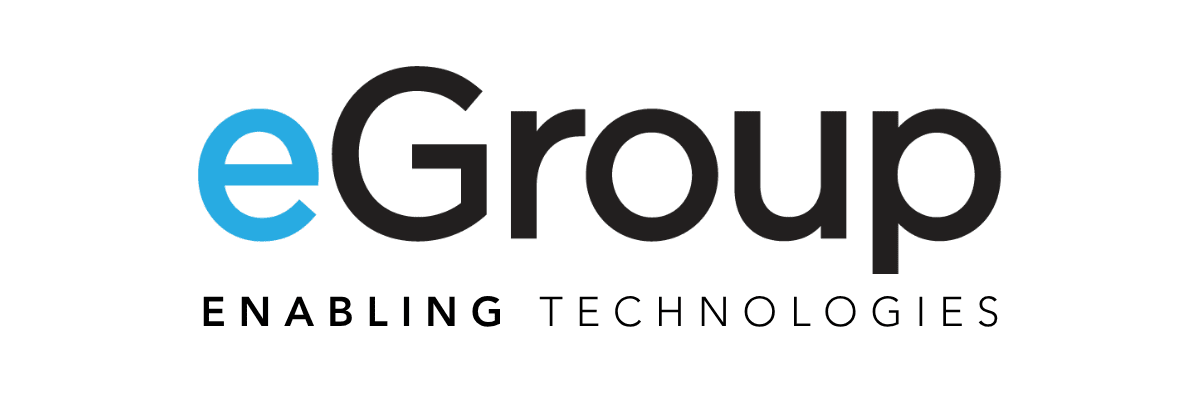These days, when two entities merge, they’ll both likely have some kind of Microsoft 365 footprint. Mergers and Acquisitions (M&A) can pose several challenges, such as data migration, identity management, licensing, governance, compliance, and change management. These challenges can be with people, processes, and technology, requiring a holistic approach to effectively address them.
This article explores common considerations, challenges, and recommendations for integrating and operating Microsoft 365 in M&A scenarios. It shares best practices and tips for achieving a smooth and successful transition and transformation with Microsoft 365. These stories come from experience with over 50 tenant consolidations.
Two Approaches to Tenant Migration
It’s paramount to address the initial decision that sets the stage for the entire process: how to consolidate tenants. In most M&A scenarios, two main approaches are commonly considered:
- Migrate One Organization into the Other’s Existing Tenant:
- Pros:
- Faster Integration: This approach often results in a quicker integration process because one organization adapts to the existing infrastructure of the other.
- Simplified IT Administration: With only one tenant to manage, IT administrators face a less complex environment.
- Only Half of the Users are Disrupted: As there’s only one tenant, the people who started there and are staying there experience little to no change.
- Cons:
- Missed Opportunity for a Fresh Start: The stale accounts, antiquated settings, and old data are still in the remaining tenant.
- User Experience Challenges: Users from the acquired organization might face disruptions as they adapt to the host organization’s settings and policies.
- Pros:
- Create a Fresh Tenant and Migrate Both Organizations into the New Tenant
- Pros:
- Clean Slate: Starting with a new tenant can lead to a clean slate, reducing legacy issues and complexities.
- Equal Footing: Both organizations start on equal ground, which can help in fostering a sense of unity.
- Customization: Offers the opportunity to create a tenant tailored to the new organization’s unique needs and requirements.
- Cons:
- Extended Migration Time: This approach typically takes longer, as both organization’s data and identities must be migrated to the new environment, disrupting both user communities.
- Increased IT Administration: Managing a fresh tenant while ensuring data migration and user onboarding can be more challenging.
- Pros:
These consolidation approaches should be considered carefully in the context of your M&A. Factors like the urgency of integration, the need for customization, and the risk tolerance of the organizations involved play a significant role in making this decision.
Executive Considerations for Tenant Consolidation
Before embarking on the integration and operation of Microsoft 365 in M&A, it is important to consider some key factors that can influence the scope, complexity, and duration of the project.
Successful executives address the following key areas:
- Their team
- The user community
- The budget
- The risks and rewards
Their Team
M&A initiatives often put the CIO in a tough spot. The C-Suite wants to quickly integrate all employees, but the tendency of the IT team is to minimize risk and maximize stability. Faced with these incongruent priorities, some leaders are tempted to lean on their team to hurry. This leaves IT managers feeling overwhelmed, especially those who are uninitiated to tenant consolidation.
In a recent example of haste making waste, one IT Executive swooped into a project after his team spent weeks planning. Faced with an impending deadline without a single user being migrated, he took a very proactive posture. He focused only on the technical aspects of the migration, ignoring the user experience (see more later). He stepped on the meticulous work done by the project manager, who inopportunely resigned two weeks before the scheduled migration.
Successful CIOs trust their team to dictate:
- The schedule—where measuring twice and cutting once is recommended.
- If they need external help—from migration tools to consultants who’ve done M&A.
- How to ensure a smooth end-user experience—which involves more than training or sending an email.
In addition to accounting for the architect/system admin time to plan and execute the migration, budget for some help desk time to prep and handle questions or issues from the migrated user community.
The User Community
It’s easy to think, “People are using Microsoft 365 today, and they will after the migration, so let’s go!” However, understanding and then communicating what will happen when and to whom is the number one gap in poor consolidations.
There are tactical, behind-the-scenes minutiae that IT pros will know about, like reconfiguring the Outlook profile to point to the new tenant. But under that top level, some situations could erode the team’s credibility if left to the help desk to explain.
| User Experience Change | Accommodation/Communication |
|---|---|
| Security Steps: Users might encounter changes in security procedures, such as password requirements or multi-factor authentication. | 1. Clearly communicate the updated security policies, emphasizing the importance of identity and data protection. 2. Solicit champions in the acquired company to support the policies of the combined organization. Ask how things really worked and who will balk. |
| User Permissions: This is common, where access restrictions or permissions changes affect the ability to access systems or files to perform certain tasks. | 1. Document permissions prior to the migration. Scrub old accounts/access while doing so. 2. Make it clear that folks must log out and in again to their new alias to see their migrated files. |
| Access to Documents: Users might face difficulty accessing their documents, especially if their shared files are moved to SharePoint or OneDrive. They may need to reshare the (updated) links. | 1. Provide comprehensive training on the new document access methods and storage locations. 2. Use a migration tool that preserves access rights and folder structures. |
| Mobile App Re-registration: Users will have to make some settings changes. They’ll likely only do this when there is a problem. | 1. Get attention by creating a compelling messaging and branding campaign. 2. Equip the help desk with concise job aids to send to those who missed the instructions. |
A strong change management and communication program, following the theme of the larger acquisition team, should focus on the question, “What’s in it for the users once they migrate?” Examples include:
- Unified Collaboration Tools: With a consistent set of collaboration tools, they can more seamlessly schedule meetings, share documents, and communicate with colleagues in one environment. This removes friction, such as file sharing glitches and free/busy scheduling.
- Pro Tip: Even before the tenant consolidation, using Teams Shared Channels makes the new associates feel like part of their new company.
- Streamlined Identity and Access: Once integrated into the single tenant’s Entra ID (formerly Azure Active Directory), people can have single sign-on to the new organization’s SaaS and on-premises applications.
- Pro Tip: It’s not necessary to change their email alias or login ID.
- Cultural Immersion: New associates can more naturally launch their browser to the corporate intranet page, see news and top-down announcements, and get involved!
These initiatives take the time of internal resources and/or external specialists to get it right.
The Budget
Once we begin our work with CIOs on consolidations, they usually make some judgments about what is involved. Commonly overlooked aspects of the budget include:
- Personnel Time
- Migration Tools
- Subscriptions/Licensing
1. Personnel Time
The human effort involved with the migration is often unknown until IT Pros or their consultants understand the size and type of data to migrate. This is because Microsoft throttles inbound traffic (and migrations have lower priority over normal send/receive traffic). Predicting the timing of data migration can be challenging because of the volume, file sizes, and bandwidth involved, as well as the potential for data corruption.
One recent example is an organization in California. Our consultant assisted with a migration of 12,000 mailboxes on a Sunday night, but planning started eight months in advance and mailboxes were staged two months in advance (seeding the new tenant with users’ very old email).
Also, consider if your help desk can support another 100 or 10,000 issues the next day, and the time they’ll need to spend preparing for Day 1.
Finally, include the expertise of extended team members, like HR and corporate communications, who play an important role in messaging and culture-building during the transition.
2. Migration Tools
Microsoft has native tools for SharePoint, Exchange Online, and others to help migrate data from tenant to tenant, with minimal disruption and downtime.
But using third-party tools and services, such as ShareGate, BitTitan, Quest, etc. have advantages beyond just moving bits. These tools and services can offer more features (such as maintaining links and permissions) and flexibility (granular control, scheduling, reporting, and auditing).
Often, both the free and paid tools are used in combination, especially when consolidating the two organization’s Entra ID (formerly known as Azure AD) forests at the same time.
3. Subscription Licensing
Frequently, the smaller organization being required has a lower tier licensing level than the acquiring company. If compliance or security policy requires it, an uplift may be needed to provide the acquired entity with the minimum security tools needed (i.e., Conditional Access or Mobile Device Management).
The Risks and Rewards
This article has covered some ways to reduce risk in the critical areas of personnel, user experience, and cost, but three additional risks are common:
There can be hidden opportunities to optimize several aspects of IT management as the organizations are consolidated.
- PC and device provisioning can be simplified by the use of Autopilot. It’s a good time to consider outsourcing the provisioning and device shipment to a third party.
- Security oversight improves with additional signals from additional devices and identities. Consider outsourcing security monitoring with a Managed eXtended Detection and Response (MXDR) provider.
- It may be possible to purge antiquated settings and data from the environment, especially if option two below is chosen.
| Risk | Remediation |
|---|---|
| Inconsistency of Governance, Retention Policies, and Security Rules | Partner with champions from both entities to rectify the policies of the combined organization. Leverage Microsoft 365 data governance features to maintain compliance and manage data lifecycles. |
| Latent Security Breaches | Execute pen tests on existing infrastructure and evaluate the acquired entity’s 365 Security and Compliance Scores. Focus on identities, databases, and domain controllers. |
| Data Fragmentation and Duplication | Define what tools will be used for what types of data storage, help users automate the transfer to the destination target, and deduplicate to start with a well-structured data landscape post-merger. |
Conclusion
Integrating disparate Microsoft 365 tenants during M&A can be a challenging and complex undertaking that requires careful planning and execution.
This article provided key factors, common challenges, and tips to successfully navigate the technology aspects of Microsoft 365 during M&A to achieve a seamless and secure transition and transformation.
We hope that this article has provided you with some useful insights and guidance for your Microsoft 365 integration and operation project—and that you have learned from the experiences of some of the organizations that have done it successfully. If you have any questions, fill out the form below or head to our Contact page to connect with one of our experts today!
Need Help With Your Tenant Consolidation?
Contact our team of experts today to learn the best practices and how we can help facilitate a smooth transition!



